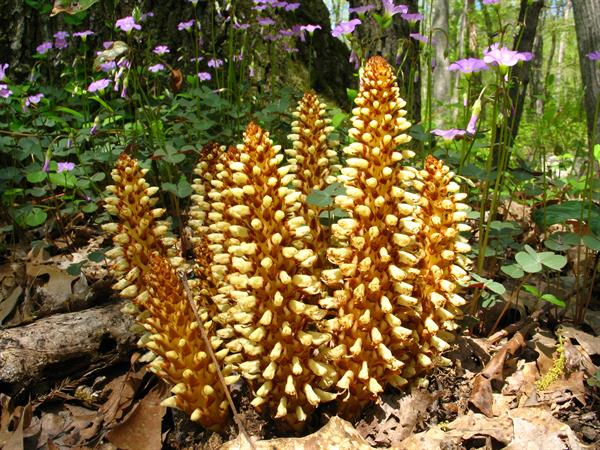
Origin/Endemic status: Native
Other Comments: Haynes (1971) discusses the nature of the parasitism. Conopholis apparently germinates near an oak root, forms a parasitic connection to the root, resulting in the formation of a gall consisting of both Quercus and Conopholis tissue. The gall can be up to 25 cm in diameter, and lasts for many years, repeatedly sending up flowering shoots. It is believed that the gall exists underground for some years prior to first flowering.
Synonymy: = C, F, Fl7, FNA17, G, Il, K1, K3, K4, Mi, NE, NY, Pa, RAB, S, Tat, Tn, Va, W, WH3, WV, Haynes (1971), Rodrigues et al (2013), Rodrigues, Colwell, & Stefanović (2011), Thieret (1971); < Conopholis alpina Liebm. – Mex
Heliophily: 1
Hover over a shape, letter, icon, or arrow on the map for definition or see the legend.
 © Alan M. Cressler | Original Image ⭷
© Alan M. Cressler | Original Image ⭷ © Edwin Bridges | Original Image ⭷
© Edwin Bridges | Original Image ⭷ © Keith Bradley | Original Image ⭷
© Keith Bradley | Original Image ⭷ © Erik Danielson source | Original Image ⭷
© Erik Danielson source | Original Image ⭷ © Erik Danielson source | Original Image ⭷
© Erik Danielson source | Original Image ⭷ © Erik Danielson source | Original Image ⭷
© Erik Danielson source | Original Image ⭷ © Richard & Teresa Ware CC-BY-NC, permission granted to NCBG | Original Image ⭷
© Richard & Teresa Ware CC-BY-NC, permission granted to NCBG | Original Image ⭷Feedback
See something wrong or missing on about Conopholis americana? Let us know here: (Please include your name and email if at all complicated so we can clarify if needed.)
Cite as...